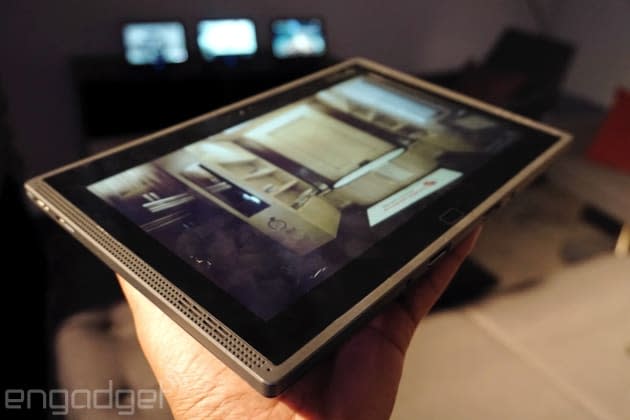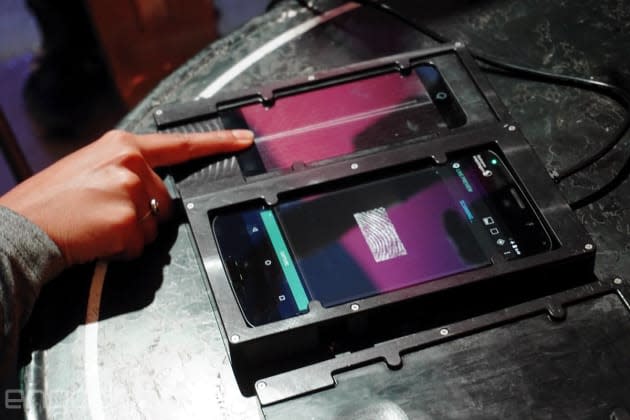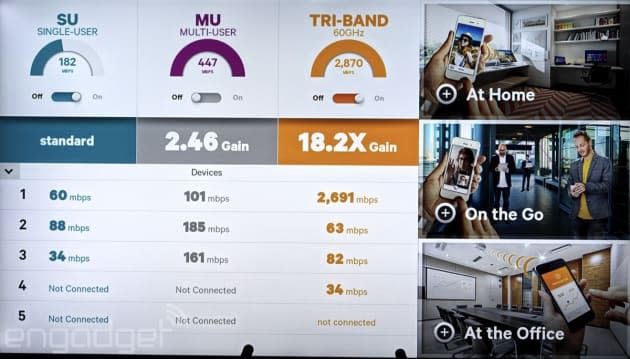How Qualcomm's Snapdragon 820 will improve next year's gadgets

Qualcomm officially unveiled its latest mobile chip, the Snapdragon 820, at a media event in New York City this morning. But, given that the company has been divulging details about the 820 for the past few months, you wouldn't be blamed for thinking that it was announced long ago. We already know that the Snapdragon 820's Adreno 530 GPU is around 40 percent faster than the 810's graphics (making it ideal for VR); it will deliver LTE speeds of up to 600 Mbps and support 802.11ad WiFi; it's significantly more power-efficient; and it'll use machine learning to fight malware right on your device. So what's left to announce? Not much, it turns out. But Qualcomm did give us a look at how the 820's new features could be applied to devices in 2016.
First, though, specs: The Snapdragon 820 is made up of the new 64-bit Kryo CPU, a 14nm quad-core chip; the aforementioned Adreno 530 GPU, which supports OpenGL ES 3.1+ and OpenCL 2.0 Full; the Hexagon 680 DSP, which includes a "Low Power Island" dedicated to sensor processing; the new X12 LTE modem; and several other upgraded components. As always, it's up to device manufacturers to actually take advantage of the features being offered by the Snapdragon 820, but it's still worth knowing what the chip is fully capable of. Here's what those specs mean for you.
A faster, more efficient processor

Naturally, Qualcomm's new flagship chip is significantly faster than its old one. But perhaps more useful is its power efficiency — the company claims it's around twice as efficient as the 810, and it consumes around 30 percent less energy overall. Without any major breakthroughs when it comes to battery technology, the best way to increase battery life is by making chips more efficient.
The 820 is also pretty solid upgrade on the graphics front. Qualcomm had several elaborate 3D environments running on Snapdragon 820 reference tablets, and they were far more impressive than the games I saw running on the 810 last year. The environments look more detailed, and the lighting looked similar to something you'd see on a game console today.
Better LTE connections
On top of just supporting faster speeds, the Snapdragon 820 also has a few tricks up its sleeve to improve your LTE experience. It supports LTE-U, for example, which allows carriers to use unlicensed WiFi spectrum to make their networks more robust (it could be particularly useful in crowded areas). WiFi calling has also improved, with the ability to hop between WiFi and LTE more intelligently, depending on the speed of your WiFi network. And there's also a new "Trusignal" antenna boost technology, which optimizes your reception based on things that may be blocking it (like your hand grip, for one). That feature is already available on LG's V10 smartphone.
Ultrasonic fingerprint authentication

Qualcomm already unveiled Sense ID, its ultrasonic fingerprint authentication tech, earlier this year. But today we got to see it in action on a few prototypes. Unlike capacitive fingerprint reading, which is what everyone is using on smartphones these days, Sense ID won't be affected by debris or sweat on your fingers. And the ultrasonic sensors can also be embedded in metal, glass and other surfaces, which means they can be placed just about anywhere on your phone, even right on the side. Sense ID appeared to work just as fast as Apple's latest Touch ID implementation, and a bit of dirt on a Qualcomm reps fingers didn't slow it down at all.
Multi-gigabit wireless speeds with 802.11ad

While many consumers and devices are only now beginning to adopt 802.11ac, Qualcomm is already preparing the Snapdragon 820 for the next standard, 802.11ad. The big draw with the new standard is potential speeds of around 5-6 Gbps in close range and tri-band connectivity in the 60GHz spectrum. As you can see in the chart above, Qualcomm's demo shows the newer standard performing significantly faster than 802.11ac with multi-user MIMO technology (which itself is better than the single-user MIMO tech being used by 802.11n in the first column).
802.11ac can theoretically hit around 6 Gbps, but in real world usage you'll likely see speeds under a gigabit. That's certainly going to be enough for most people now, but as we're looking to stream things like 4K video, we'll likely see a need for higher bandwidth wireless over the next few years. Qualcomm showed off a 4K video streaming wirelessly from a phone to a TV via an 802.11ad dock, which looked pretty much flawless. (We saw a similar 4K streaming demo last year ahead of the Snapdragon 810's release.) Qualcomm says 802.11ad routers should start appearing next year, but as with most WiFi tech, you might want to wait a bit for investing in new hardware.










